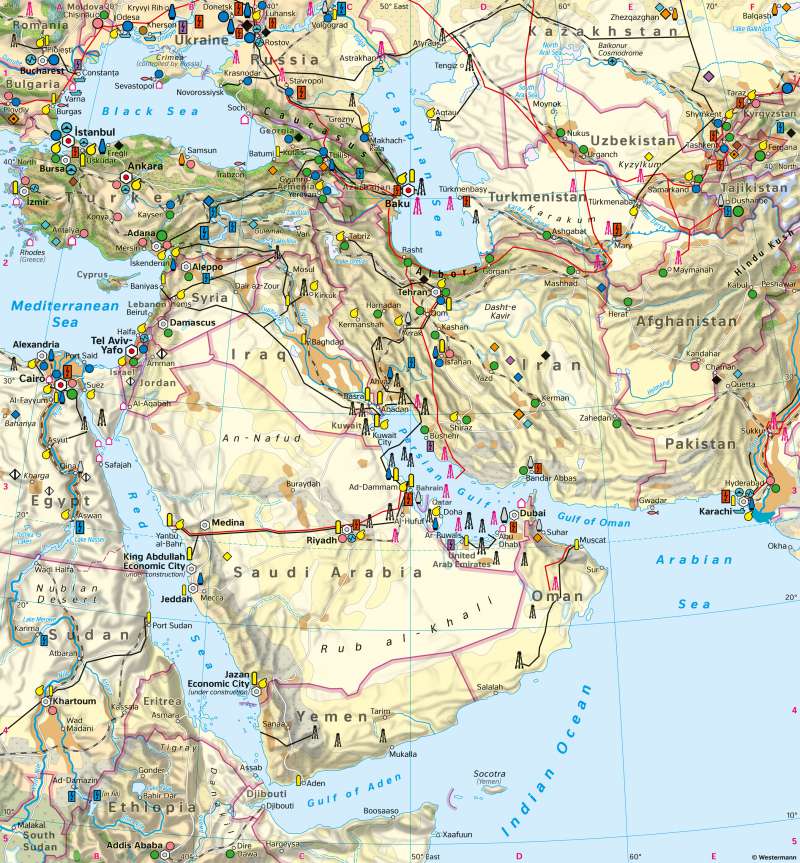West Asia (Middle East) - Land use and economy
Economic development in the Middle East
978-3-14-100890-6 | Page 140 | Ill. 1

Overview
Much of the land of the countries in West Asia consists of semi-desert and desert (Saudi Arabia, Iran, Iraq, Turkmenistan, Uzbekistan). Other large areas are covered with steppe and mountain pasture (Iran, Afghanistan). Only in Turkey are there larger forest landscapes.
Economic areas
The Persian Gulf and its surrounding areas are of great geopolitical importance because of the wealth of oil and natural gas. In 2016, Saudi Arabia (36.6 billion tonnes), Iran (21.8 billion tonnes), Iraq (20.6 billion tonnes), Kuwait (14.0 billion tonnes) and the United Arab Emirates (13.0 billion tonnes) were among the eight countries with the largest oil reserves in the world. Large quantities of natural gas are also available in Iran and Qatar. Because of its mineral resources, the Persian Gulf was the scene of the three Gulf Wars. Nowadays, efforts to diversify the economic structure are increasingly taking hold, i.e. other industries are being promoted in addition to the oil and gas industry. High investments have been made in industrial sectors such as chemicals or aluminium production, but above all in the service sector, for example in locations such as Dubai.
Greater economic regions
Two large economic regions dominate within West Asia: The area in and around the Persian Gulf are focused on oil production, which is followed by refineries and the petrochemical industry. In addition, there is gas production and locations of energy-intensive industries such as metal smelting. This industry structure is increasingly complemented by services. The economic structure of the coastal areas on the Mediterranean is more diverse. Israel is the most powerful economy here, with industries ranging from export-oriented irrigated agriculture to the chemical and high-tech industries to tourism.
Coastal locations connected by pipelines to oil-producing areas (Central Asia, Iraq, Persian Gulf) are preferred locations for refineries and chemical industries in this region. Mining in the Kuhrud Mountains and numerous locations of the textile industry make the fringes of the large basins in the interior of Iran an important economic area. The continent's most important agricultural landscapes include the large river oases (Mesopotamia, Central Asia), the oases of the Arabian Peninsula, the Israeli coastal plain, the southern foothills of the Caucasus and the southern shore of the Caspian Sea. Especially in Iran and the Caucasus foothills, agriculture is favoured by relatively high rainfall. Larger holiday regions in West Asia are only located on the Mediterranean Sea, the Black Sea, and near Dubai and Abu Dhabi.




